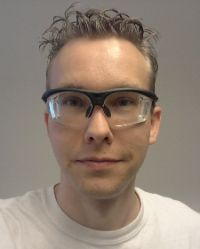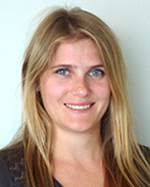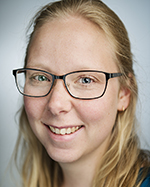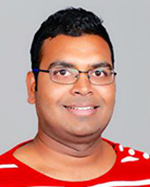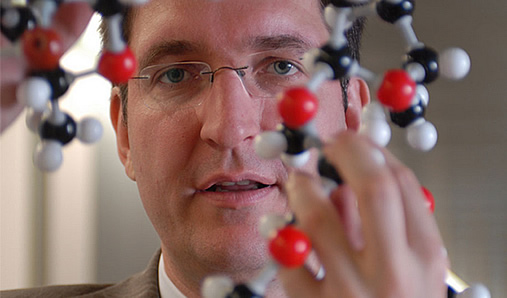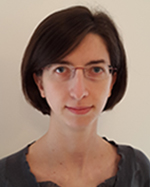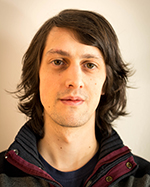Arrangementer - Side 39
Master of Science Andreas Pierre Thörn ved Fysisk institutt vil forsvare sin avhandling for graden ph.d: “What makes entangeled photons entangeled? An experimental comparison between entangeled photons and weak femtosecond pulses”
Master i fysikk Andreas Pierre Thörn ved Fysisk institutt avholder prøveforelesning over oppgitt emne: "Metamaterials and Optical cloaking"
Master i Fysikk Jon Alm Eriksen ved Fysisk institutt vil forsvare sin avhandling for graden ph.d: "Pattern Formation in Granular Fluids"
Master i Fysikk Jon Alm Eriksen ved Fysisk institutt avholder prøveforelesning over oppgitt emne: "The rheology of granular suspensions"
M.Sc. Lene Norderhaug Drøsdal ved Fysisk institutt vil forsvare sin avhandling for graden ph.d: "LHC Injection Beam Quality During LHC Run I"
M.Sc. Lene Norderhaug Drøsdal ved Fysisk institutt avholder prøveforelesning over oppgitt emne: "Ion acceleration: conventional methods and novel acceleration concepts" .
The conference aims to promote scientific exchange and the development of novel ideas, with a particular emphasis on interdisciplinarity.
Master i fysikk Jørgen Kjoshagen Trømborg ved Fysisk institutt vil forsvare sin avhandling for graden ph.d: "Modelling the onset of frictional sliding: Rupture fronts, slow slip, and time-dependent junction laws".
Master i fysikk Jørgen Kjoshagen Trømborg ved Fysisk institutt avholder prøveforelesning over oppgitt emne: “Anomalous Diffusion: From Condensed Matter and Biological Systems to Financial Markets”
Kalliopi Petraki, NIKEF Amsterdam [slides]
Observations of the galactic and sub-galactic structure of our universe suggest that a shift from the collisionless cold dark matter paradigm may be needed. Dark matter with sizable self-interactions offers a compelling explanation of these observations.
Particle physics models of self-interacting dark matter can be well accommodated within the asymmetric dark matter scenario. Asymmetric dark matter hypothesizes that the relic dark matter abundance is due to an excess of dark particles over antiparticles, and allows for sizable and direct couplings of dark matter to light force mediators.
In addition, the dark particle-antiparticle asymmetry may be related to the baryon asymmetry of the universe, thus offering a dynamical explanation for the similarity of the dark and the ordinary matter abundances. Exploring the low-energy phenomenology of self-interacting asymmetric dark matter, including the effect on the dynamics of dark matter halos and possible detection strategies, presupposes understanding the cosmology of these models, which can be quite involved. I will discuss the above, and illustrate them in the context of the atomic dark matter model.
M.Sc. Siv Gundrosen Aalbergsjø ved Fysisk institutt vil forsvare sin avhandling for graden ph.d.: "DFT as a tool for understanding biomolecular radiation damage"
Master of Electrical Engineering Naveen Goud Ganagona ved Fysisk institutt vil forsvare sin avhandling for graden ph.d: "Electrical characterization of impurity-defect complexes in silicon"
M.Sc. Siv Gundrosen Aalbergsjø ved Fysisk institutt avholder prøveforelesning over oppgitt emne: "The accuracy of DFT for determining EPR parameters of transition-metal systems: pros and cons with DFT, and possible alternatives"
Master of Electrical Engineering Naveen Goud Ganagona ved Fysisk institutt avholder prøveforelesning over oppgitt emne: "Metamaterials;- Background, manufacturing, properties and applications".
Kai Schmidt Hoberg, DESY, Hamburg [slides]
I will review motivations for the existence of self interacting dark matter and discuss possible astrophysical observables. Self-interactions of dark matter particles can potentially lead to an observable separation between the dark matter halo and the stars of a galaxy moving through a region of large dark matter density. Such a separation has recently been observed in a galaxy falling into the core of the galaxy cluster Abell 3827. I discuss the DM self-interaction cross section needed to reproduce the observed effects.
The research centre for dark matter, The Strategic Dark Matter Initiative - SDI, will officially be launched on Friday, and invites you all to a popular science lecture, with coffee and snacks.
Thomas Jacques, Université de Genève, Switzerland [slides]
As beyond-standard-model physics continues to elude discovery at the LHC, it becomes increasingly important to ask what we can learn about dark matter in a model-independent way. I will introduce the theory and usage of effective operators; these have become popular in recent years as a way to construct model-independent constraints on dark matter, but at LHC energies it is crucial to understand their significance and limitations, and how they can be used to compare the reach of vastly different experiments. With this in mind, I will also discuss the next step beyond effective operators, and techniques to link the search for missing energy with the much-sought-after Dark Matter.
Tittel: Preventing and Curing Infectious Diseases: Carbohydrate Vaccines and Continuous Flow Synthesis
Ekstraforelesning fra årets Hasselforeleser. Tittel: The Logic of Automated Glycan Assembly
Mark Burgess
Physics is probably the most successful science when it comes to describing how things behave, but it avoids interpreting the meaning or the intent of behaviours. In technology, especially IT, meaning and intent are at the top of the list when it comes to description, but IT fails to describe system dynamics convincingly. Promise Theory is an attempt to unify dynamical and semantic descriptions of systems, inspired by the successes of physics - and it sheds an interesting light on both fundamental physics and information science.
Laurea in Scienze Fisiche Beatrice Mandelli ved Fysisk institutt vil forsvare sin avhandling for graden ph.d: "Detector and System Developments for LHC Detector Upgrades"
Laurea in Scienze Fisiche Beatrice Mandelli ved Fysisk institutt avholder prøveforelesning over oppgitt emne: "Probing the unknown at LHC: Beyond Standard Model Physics" .
Master of Science Magnar Kopangen Bugge ved Fysisk institutt vil forsvare sin avhandling for graden ph.d: "Search for new charged bosons and dark matter in final states with one lepton and missing transverse energy with the ATLAS detector at the LHC"
Master of Science Magnar Kopangen Bugge ved Fysisk institutt avholder prøveforelesning over oppgitt emne: "Neutrino mass and mixing: what do we know today and what are the open questions?"
Thomas Schwetz-Mangold, Stockholms Universitet [slides]
The observation of neutrino oscillations requires that neutrinos have a tiny but non-zero mass. This implies that the Standard Model of particle physics has to be extended in some way beyond its original formulation where neutrinos are massless. We review the present status of neutrino oscillations and give a brief outlook on future developments in the field. We speculate on the implications for physics beyond the Standard Model and discuss the challenges to identify the mechanism responsible for neutrino mass.
